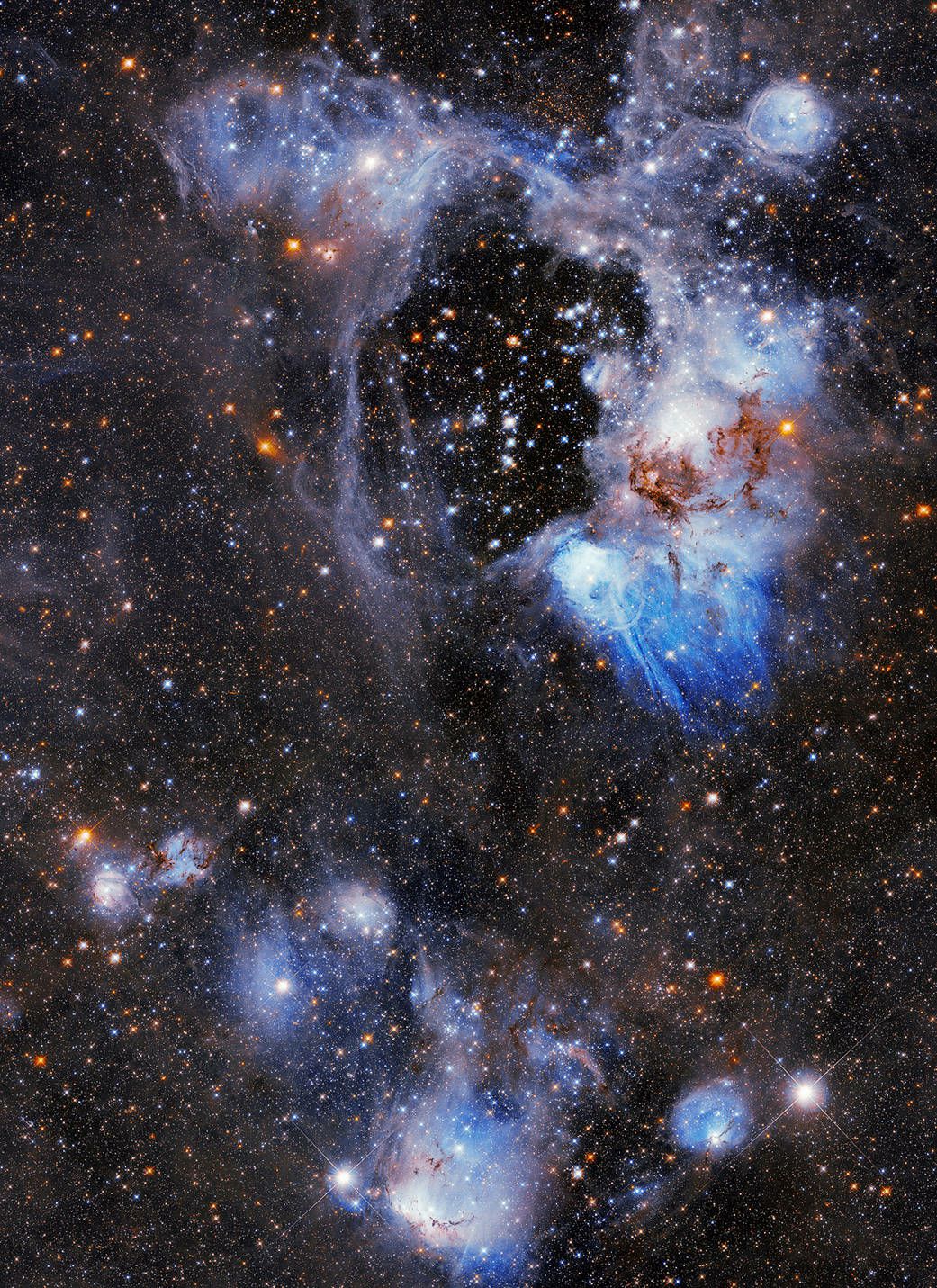Mysterious “Superbubble” Hollows Out Nebula in New Hubble Image.
N44: Exploring a Complex Nebula Filled with Wonders. In the vast expanse of the universe, N44 stands as a mesmerizing spectacle—a complex nebula that unveils a stunning display of glowing hydrogen gas, interlaced with dark lanes of dust and populated by a diverse array of stars. However, it is the enigmatic “superbubble,” a dark, starry gap at the heart of N44, that truly captures our attention. This article will delve into the mysteries surrounding this intriguing feature, as well as shed light on the remarkable characteristics of this celestial wonder.
The superbubble within N44, as captured by the Hubble Space Telescope, is a striking sight. Measuring approximately 250 light-years in width, this vast void has puzzled astronomers, leaving them grappling with its origin and nature. One hypothesis suggests that stellar winds from massive stars residing within the bubble’s interior might have driven away the surrounding gas. However, the measured wind velocities in the bubble do not align with this theory. Another possibility is that the expanding shells of old supernovae, resulting from the explosive deaths of massive stars, sculpted this cosmic cavern.
Astronomers have identified a supernova remnant in the vicinity of the superbubble, providing clues to its formation. Moreover, they have discovered an age difference of approximately 5 million years between stars located within the superbubble and those at its rim. This revelation hints at a chain-reaction process of star formation events, further adding to the mystique of N44. The deep blue area encircling the superbubble, located around 5 o’clock in the image, not only represents one of the hottest regions of the nebula but also signifies an intense phase of star formation.
N44, classified as an emission nebula, derives its luminosity from the ionization of its gas by the radiation emitted by nearby stars. As the ionized gas gradually cools from its higher-energy state to a lower-energy state, it releases energy in the form of light, thus causing the nebula to emit a captivating glow. Situated in the Large Magellanic Cloud, a satellite galaxy of the Milky Way, N44 extends over approximately 1,000 light-years and lies at a staggering distance of around 170,000 light-years from Earth.
The study of N44 not only provides astronomers with a visual feast but also unveils insights into the intricate processes at play in the cosmos. From the interplay of stellar winds and supernova remnants to the cascading effect of star formation, N44 serves as a cosmic laboratory, offering a glimpse into the dynamic and ever-evolving nature of our universe.
In conclusion, N44 is a breathtaking emission nebula featuring a host of captivating elements. The enigmatic superbubble, with its dark, starry void, remains a subject of intense study and speculation. This celestial masterpiece, filled with glowing hydrogen gas, dust lanes, and a multitude of stars of various ages, showcases the awe-inspiring wonders that await our exploration in the cosmos. As we continue to unravel its secrets, N44 stands as a testament to the boundless beauty and mysteries that lie beyond our earthly confines.
Hits: 0







